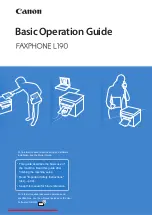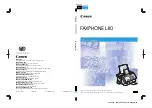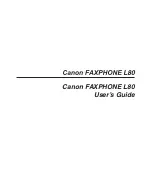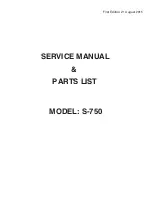
3JF-1
2-2-5
2-2-2 NCU PCB
TEL2
TEL1
Loop current
detection/tone signal
reception circuit IC30
Destination
identification circuit
JP20, JP21, JP22
DC loop/dial pulse
transmission circuit PC80
Line
transformer
T70
Ring signal
detection
circuit
PC60
Accounting
pulse elimination
circuit
L70*
Ground start
circuit PC10
External telephone
off-hook detection circuit
T40, PC40
NCUTYPE
1, 2, 3
K70
N.C.
N.C.
K11
K10
/ONHOOK2
/ONHOOK1
RXIN
FAXSEL
MODRXD
MODTXD
SHUNT
PLSDIL
RNGDET
EARTH
DCCONT
/OFFHOOK
EXTRING1
EXTRING2
TELSEL
LINE1
TEL GND
LINE2
TEL L1
TEL L2
Figure 2-2-3
NCU PCB block diagram
The NCU PCB (NCUPCB) mainly controls the connection to the telephone line. It consists of the circuits shown in the block
diagram.
The loop current detection/tone signal reception circuit IC30 detects the DC loop current formed at the DC loop/dial pulse
transmission circuit PC80 to determine the status of the telephone line. It also receives tone (DTMF) signals during remote
control. The ring signal detection circuit PC60 detects the ring signals from the telephone line to determine call reception.
The DC loop/dial pulse transmission circuit PC80 turns on and off the DC loop formed in the telephone line to send out dial
pulses (selection signals). The external telephone off-hook detection circuit (T40 and PC40) detects the off-hook state of the
telephone connected. The destination identification circuit (JP20, JP21 and JP22) is used by the fax control PCB (FCPCB)
to identify the destination of the NCU PCB (NCUPCB). The accounting pulse elimination circuit L70 removes signals
representing the communication charge information (accounting pulses) before they reach the modem when telephone line
is used.* This is because accounting pulses obstruct fax communications. The ground start circuit PC10 requests an
outside connection to the private branch exchange (PBX) when calling via the PBX.*
*For 220 - 240 V specifications only.



































